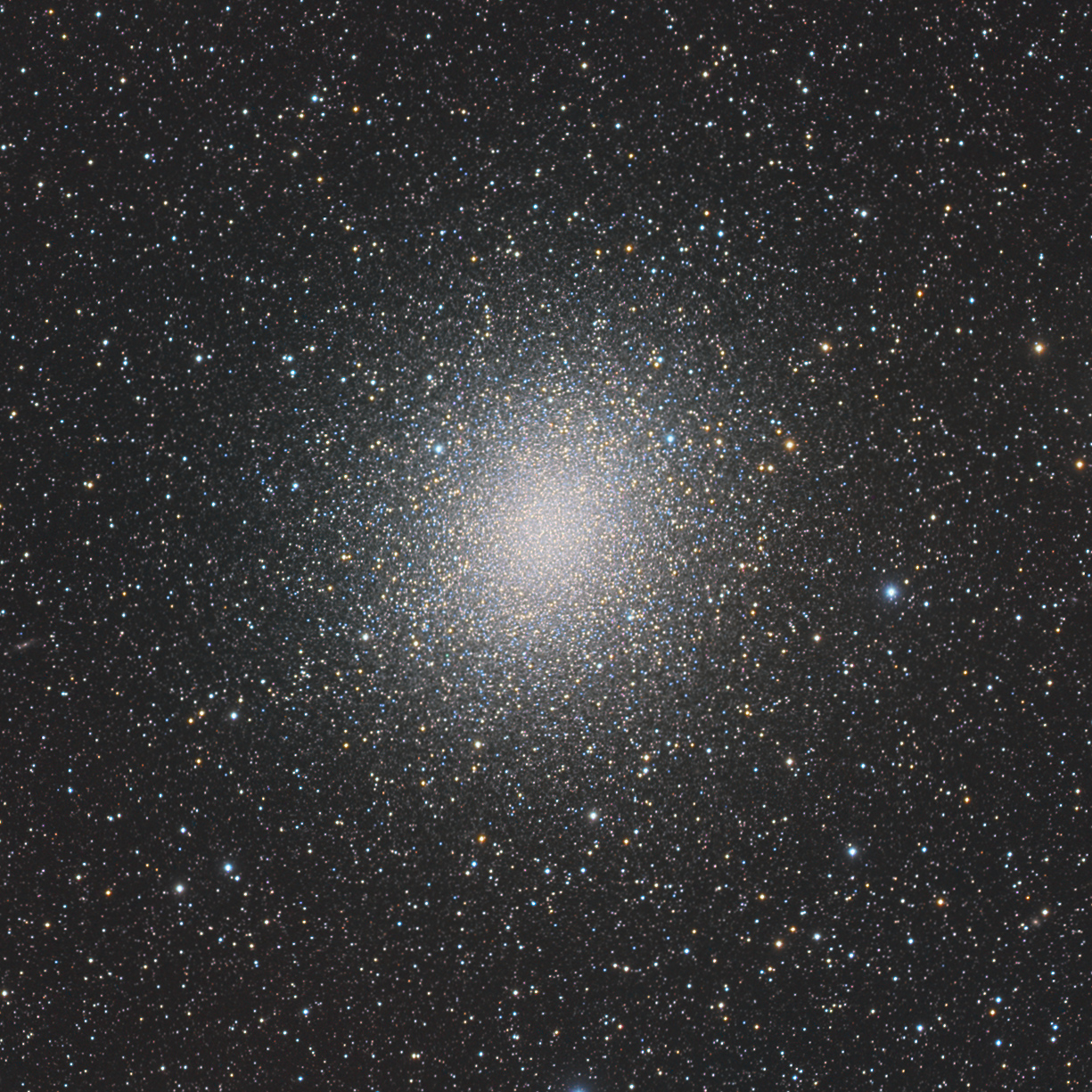

Omega Centauri: A globular cluster is a group of ancient stars (Omega Centauri is thought to be almost as old as the universe, perhaps 12 - 13 billion years old),
gravitationally bound to each other, orbiting the core of its associated galaxy.
Omega Centauri is about 17,000 light years from Earth (just above the plane of our Milky Way galaxy) and
appears to be almost the same size as a full moon when viewed from very dark skies; it is roughly 230 light years across. It shines at magnitude 3.9, and is easily visible to the naked eye.
It has a mass equal to about 5 million times that of our sun, and contains as many as 10 million stars. It is many times as massive as the next-largest globular cluster in our galaxy.
Omega Centauri also is unusual among globular clusters in that it has stars of different ages, and apparently contains a black hole at its center; these facts strongly suggest that Omega Centauri may be the remnant
of a dwarf galaxy whose outer stars were stripped off by an earlier collision with our Milky Way. All of the stars in the cluster are close together, by galactic standards; the average distance between any two stars in the cluster's
core is only about a third of a light-year, roughly 13 times closer than our Sun's nearest stellar neighbor, Alpha Centauri. According to a NASA website, "if anyone lived in this globular
cluster, they would behold a star-saturated sky that is roughly 100 times brighter than Earth's sky." My images of M13 and M92 are much larger because I took those with a telescope with much
longer focal length (which, as a result, produces images which are far more detailed). The fact that this image can be as detailed as it is is a strong testimony to the size of Omega Centauri.
I have also taken an image of this beautiful cluster with my large telescope, posted here.
Copyright 2013 Mark de Regt